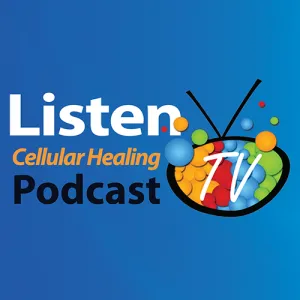Five hundred years ago, we lived by the sun’s light and power. At night, we either used minimal lighting that came from fire, candles, etc. But when we retired for the evening, darkness lent itself to a restful sleep environment.
Our bodies are genetically adapted to specific light, such as unfiltered daylight. Natural sunlight consists of approximately 1500 wavelengths that include the entire spectrum of colors as red, blue, purple, green, orange, violet and yellow.
In fact, different forms of natural color lights can be very therapeutic. According to Dr. Joseph Mercola in his article “Your Body Needs Full Spectrum Light for Health”: “..full spectrum white light increases blood flow and antibody production, and decreases inflammation…and (full spectrum) red light has been successfully used to treat age related macular degeneration, knee osteoarthritis, cold sores, hypothyroidism, cognitive dysfunction following brain injury, cellulite, hair loss, and fibromyalgia.”
However, in this day and age, we live in a world where artificial light is predominant. According to Dr. Jack Kruse, a respected neurosurgeon and CEO of Optimized Life, “…the life that they were living 500 years ago isn’t the life that we’re living now. In fact, everything about now is artificial, starting with light…”
Unfortunately, our lives are not centered on the exposure to sunlight, as most of us are inside at our workplaces. It is just not a natural instinct anymore for most city dwellers to seek sunlight regularly. We spend our days staring at our computers and addicted to viewing the latest social media post, thus exposing ourselves to an inordinate amount of blue light from those devices. TVs are another source of blue light, but as they are usually viewed farther away, they don’t cause as many problems.
During the day, blue light (especially from the sun) helps to improve our mood and keeps us focused. Blue light has also been helpful in the treatment of acne and antibiotic-resistant bacteria such as MRSA. According to studies1, blue light therapy devices can help to reduce depressive states.
However, being exposed to blue light in the evening can be disastrous as it disturbs our circadian rhythm. The circadian rhythm cycle directs our body to sleep, eat, and wake-up, regulating many of our body processes. Known as our “biological clock, it is greatly affected by temperature and sunlight. In addition, the disruption of our circadian rhythm may contribute to chronic insomnia, as well as other chronic diseases such as diabetes, obesity, heart disease and cancer.
Exposure to blue light at night from computers, cell phones, and iPads tricks our body into thinking that it is daytime, and imbalances our wake-sleep cycles. It also has the potential to affect the pineal gland that secretes melatonin (a hormone that helps to control wake and sleep cycles), reducing or even shutting down the production. This can greatly affect our quality of sleep.
But it goes deeper. Blue light can negatively affect the mitochondria (the powerhouse of the cell, making ATP energy). In fact, you can trace this all the way back to Otto Warburg’s work (a Nobel prize recipient for his theories on cancer) at the turn of the century. He spoke about how light affects the proper functioning of the mitochondria, which affects the energy we produce in the form of ATP energy and, in turn, every cellular function.
How does light affect the energy production in our mitochondria? Dr Kruse explains, “….600 million years ago, we had to develop a communication system that was based on light and water to allow the nucleus to talk to the mitochondrial DNA…sunlight can only interact with electrons in a cell. The more electrons you have, the more probable chance for your body to harness the energy of sunlight in order to build complexity… (our) electrons are designed to work with full-spectrum sunlight…When those electrons are excited by sunlight via the photoelectric effects (sunlight)…electrons move across the inner mitochondrial membrane. The faster they move, the faster the ATPase spins, the higher the magnetic field is, the more life you live. Not only that, that life is healthy… About 80% of diseases are linked to mitochondrial energy flux dropping. That’s the reason why obesity, type 2 diabetes, Parkinson’s disease, Alzheimer’s, (are) based upon the loss of voltage and decreased spinning…”
What about people who live in areas that don’t get a lot of sunlight? Dr. Kruse says, “…DHA (found most commonly in fish oil) plays a big role in the receptors in the eyes. The highest concentration of DHA is located in the central retinal hypothalamic track that connects to the leptin receptor in the hypothalamus. If you have too much blue light; if you’re on the computer all the time, or you’re a trader in Chicago, you have a higher need for DHA because blue light destroys DHA in that track.
When you put a laptop on your lap or a cellphone in your pocket, you’re running the clock genes in that area much faster and that creates a mismatch. The key to DHA is you need to know that you need more of it in the eye to run this clock faster. What does DHA fundamentally do? It turns sunlight into a DC electric current. The key is you need the shorter frequency lights to run this clock faster, and DHA is the chemical that does it…”
The easiest and most effective way of blocking blue light at night is to wear amber colored glasses. These glasses can improve sleep and support the normal production of melatonin, even when you are exposed to blue light.
According to a New York Times article:
Can Orange Glasses Help You Sleep Better?
By KATE GALBRAITH
APRIL 7, 2015 12:01 AM
“A Swiss study of 13 teenage boys, published in August in The Journal of Adolescent Health, showed that when the boys donned orange-tinted glasses, also known as blue blockers and shown to prevent melatonin suppression, in the evening for a week, they felt “significantly more sleepy” than when they wore clear glasses. The boys looked at their screens, as teenagers tend to do, for at least a few hours on average before going to bed, and were monitored in the lab.”
It is best to choose warm white lights over LED lights with cool white lightening for nighttime. Also, e-books that are not back-lit are a better choice.
One popular way is to install a program called Iris your computer, which enables you to customize your screen color temperature and the amount of blue light your eyes receive. Iris hooks to the graphics pipeline and allows you to reduce the blue light on your monitor backlight. That way, you can work at night without the harmful effects of staring at a screen emanating insomnia-inducing blue light.
Other ideas for creating a restful environment at night are to get an orange or red reading lamp or use candlelight. You may want to try turning off all the lights a few hours before you retire and make sure you keep your bedroom very dark.
All in all, the elimination of blue light in your nighttime environment has the potential to send you off to dream land easily and decrease your chances of developing the above-mentioned chronic diseases over time. Sweet dreams!
Swanwick Blue Light Blocking Glasses
To get a pair of the blue light blocking glasses I use and love, go here. Swanwick blue light blockers improve your sleep and health by filtering out harmful artificial light from digital devices. Wearing these FDA-registered glasses at least an hour before bed allows you to use phones, tablets, computers and e-readers freely without disrupting your sleep, and can also prevent sore eyes, headaches, fatigue and blurred vision associated with digital eye strain.Iris – Software for Eye Protection
To check out the blue light blocking software I use and love, go here. Iris – Software for eye protection, health and productivity. Iris is software that makes Monitors healthy for the eyes. With Iris you can reduce the Blue Light emitted from your screen for better sleep, reduce the Brightness of your screen without PWM and avoid eye pain.- Strong, R. E., B. K. Marchant, F. W. Reimherr, E. Williams, P. Soni, and R. Mestas. “Narrow-band blue-light treatment of seasonal affective disorder in adults and the influence of additional nonseasonal symptoms.” Depression and anxiety. 2009. https://www.ncbi.nlm.nih.gov/pubmed/19016463.











